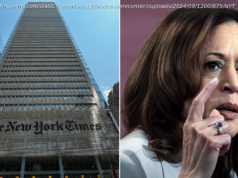The Viper Report’s Tom Aspray, who has studied market corrections for 50 years discusses the market outlook sharing his view what type of correction is most likely.
Stocks took a turn for the worse last week increasing correction fears by investors and traders. Some were suggesting that a more significant top was being formed and that was before the weekend missile and drone attack by Iran on Israel. In an early reaction to the news, Bitcoin BTC had the largest slide since 2023 as it lost 7.7% on Saturday.
The analysis of the advance/decline data at the end of March was positive for the S&P 500 the fact that it had exceeded its monthly starc+ band in both February and March that was a sign that the market risk was now higher on the long side of the market.
For those who are not familiar with starc bands, they were developed in the mid-1980s by the late Manning Stoller who was an old friend and colleague. Starc stands for the « Stoller Average Range Channel, » and by far, these are my favorite banding or channel techniques. It should be noted that they are interpreted much differently than Bollinger Bands.
The bands were constructed so that roughly 92% of the price action will be contained within the bands therefore if prices are near either of the bands they are likely closer to an extreme high or low. For example, when prices are at or above the monthly starc+ bands they are more extended than they would be if they were above the weekly or daily bands. These bands project a price range for the next period.
The chart on the left is the current monthly chart of the S&P 500 which is down 2.5% so far in April after five positive months in a row. At the end of February, the monthly starc+ band for March was 5160 and the high in March 2024 was 5264.
Neither the monthly starc+ nor starc- bands are exceeded very often. The monthly starc- band was exceeded in June 2022, also in March 2020 and December 2018 as the S&P 500 was making extreme lows.
On the right is a chart of the S&P 500 from late 2019 and early 2020.






